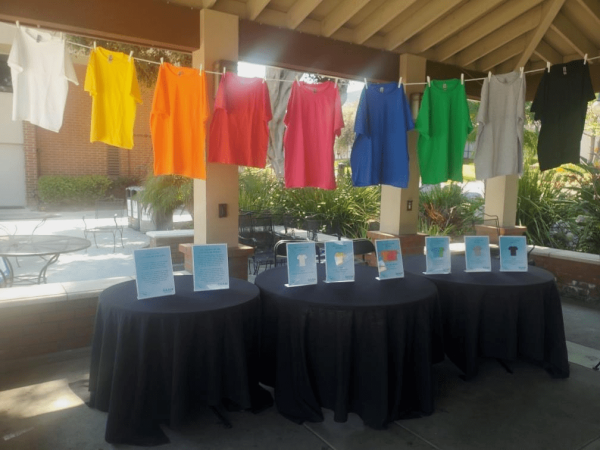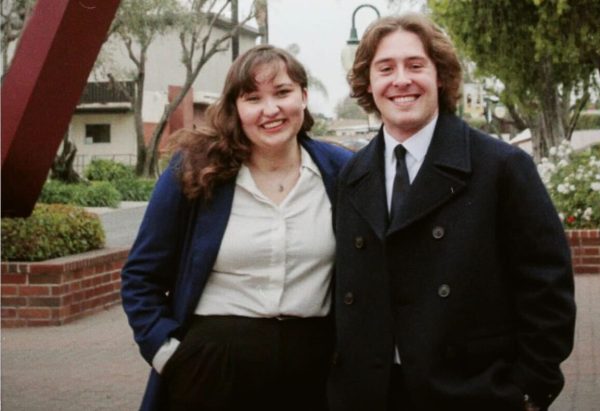PAC freezes unused department scholarship funds
The President’s Administrative Council decided to freeze unused departmental funds, $185,000, for the 2010-2011 academic year.
The President’s Administrative Council decided to freeze $185,000 in unused scholarship funds. The freeze is planned to last only for the 2010-2011 academic year. | Bethany Cissel/THE CHIMES
April 26, 2011
Effective immediately, the President’s Administrative Council has decided to freeze any unused undergraduate and graduate departmental scholarship funds, which amounts to around $185,000.
Current school year’s funds affected
The freeze affects only funds for the 2010-2011 academic year, not anything budgeted for the upcoming academic year. The PAC hopes to designate that approximately $185,000 as financial aid for next year to safeguard the university in the event that federal loans and grants should falter. But, that also means that any money which is often reserved to help students last-minute won’t be available. The affected departments include Talbot, the sciences, communications, journalism, music, art and athletics.
“I think it’s more positive in the long run,” said Jonathan Choy, director of Financial Aid. “in the short term, it’s probably viewed more negatively because you have immediate needs. But for the long-term benefit of the university of a whole there is probably more of a benefit to try and do this.”
Talbot has largest remainder
Talbot easily has the largest sum left — and thus, frozen — out of the departments on campus, with $100,000 of its original $280,000 now unavailable. Choy said Talbot often spends unused sums at the end of the year to help support students with internships. Future conversations will take place concerning the money there, he said.
Undergrad departments have little money left
For undergraduate departments, the story is slightly different. Greg Vaughan, vice president for enrollment management, explained that most departments have already allotted the sums the intend to use for the academic year by April.
“Usually, departments at the end of the year like to have something to help students at the end of the year if they have performed well or done well in their particularly major or program,” Choy said.
Music has experienced the largest undergraduate freeze, as it still had $41,000 remaining out of its original $750,000. (The amount leftover is the amount that has been frozen.) The sciences had the smallest amount of scholarship money left, with just $960 of its original $24,000. Art had about $4,000 of its original $36,000 left, according to Choy, and communications had $20,000 of its original $100,000 when the freeze went into effect. International students had just about $9,800 left in their scholarship pool of the original $234,000 at the time of the freeze.
Frozen funds likely to go to future
Departments were notified of the freeze in an email from Vaughan. Vaughan said the frozen funds, should the board of trustees accept the PAC’s proposal at the may board meeting, will likely go toward a more broad, future financial aid pool. Vaughan said the university doesn’t mean to shortchange or invalidate students who might need funds right now, but that funding the future is also a priority.
“We understand that the immediate needs of students continue to be great,” he said in an interview.
Similar freeze happened in past
The university resorted to a somewhat similar move in fall 2008 when the economy went belly up, freezing 50 percent of departments’ funds as a safety measure. Choy said that freeze received many more reactions from departments, as far more scholarship money was still untouched at that point in the year.
This current academic year, the university may allow for a few exceptions may be made for students who have already been pledged the dollars orally or in writing.
Athletics unaffected by freeze
Athletics doesn’t have money to freeze at this point in the year. Athletics consistently overspends its scholarship budget, Choy said, but usually ends up with a surplus because coaches do fundraising for their teams. This year, Athletics overspent its $1.7 million budget by about $80,000. Athletics receives a significant amount to be able to recruit and maintain players.
“You can’t always expect to be at zero,” Choy said. There are always going to be some people a little under a little over.”
University budgets to help students financially
Choy said the university is trying to be more “proactive” and be in a position to assist those students who might be affected by the federal government’s instability next year. Choy confirmed that the freeze is likely a one-time deal.
“We don’t plan to do it for next year, but as far as this year, it’s probably going to be effective for the rest of this year,” Choy said.
Unlike most scholarships, departmental scholarships are awarded at the discretion of departments, rather than through Admissions or Financial Aid. Though $185,000 is a very small piece of the pie when it comes to institutional aid (Biola awarded about $14,200,000 in institutional scholarships to 2,500 students in the 2008-2009 fiscal year, according to the university’s most recent 990 tax form), Vaughan said the university has been trying to identify any financial aid-related resources that could help supplement students’ federal financial aid. Already, Biola had budgeted money to help with any Cal Grant cuts.
“Every year, there are dollars that don’t get spent,” Vaughan said, referring to departmental scholarship funds, and allotting them “isn’t an exact science.”
Those dollars that aren’t spent, along with other dollars that aren’t spent at the university by the end of the fiscal cycle on June 30, are put into the university’s pool and dictated by the board and the president. The board mandates that 50 percent of all surplus dollars go towards the endowment fund, which essentially funds Biola’s future in terms of major projects and tuition dollars. The endowment fund also acts as the university’s savings or security net. The other 50 percent, President Corey can direct a number of ways. Some of it may go to endowment, while some of it may be directed to practical expenses. This year, the recommendation is to direct that money towards moving expenses for offices in Talbot East.







